Then<·>Now: Taiwan Experimental Film and Video Arts, Part 1
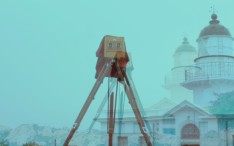
Looking for Siraya 尋找木柵女 (2013), by Li-Ming CHENG
Los Angeles Filmforum presents
Then<·>Now: Taiwan Experimental Film and Video Arts, Part 1
Sunday November 17, 2024, 7:30pm
At 2220 Arts + Archives, 2220 Beverly Blvd., Los Angeles CA 90057
Zoom Q&A after the screening with Chun-Hui Tony Wu, Ya-Li Huang, Tzu-An Wu, and Tsen-Chu Hsu, and programmer Cherlyn Hsing-Hsin Liu.
Tickets: $15 general, $10 students/seniors, free for Filmforum members
At: https://link.dice.fm/af0e832945c7
Around 1960, Taiwanese artists were inspired by the exchange of avant-garde cultures from around the world and began to develop a concept of modern experimental art. Many works created at that time had a profound impact on Taiwan's subsequent art culture. The achievements in modern experimental poetry, experimental theater, surrealism, and documentary photography are still important today, laying a solid foundation for Taiwanese avant-garde art.
We must not forget Taiwan’s complicated history and geographical location. After World War II, in 1945, Japan ended its 50-year colonial rule over Taiwan. In 1949, the Chinese Civil War ended, and Chiang Kai-shek took his troops to Taiwan and began the Kuomintang (KMT)’s political rule. After 1990, Taiwan began the process of democratization and has been implementing the rotation of the ruling party up to the present day. In this wave of political changes, the most neglected are the indigenous people of Taiwan, and many stories about them have been left behind in the torrent of history.
Geographically located between China and Japan, many Taiwanese people chose to study in the West or encouraged their children to study in the West during the economic take-off era (1960s-1980s, known as the Taiwan Economic Miracle). After returning to Taiwan, this generation of students injected many new elements into Taiwan's modern art and academic research, especially in the areas of literature, painting, film, dance, and music.
Experimental films in Taiwan started around 1960 or even earlier. Many people found a connection with Dadaism or Surrealism, which opened a ray of hope for young students who had been oppressed by political history for a long time. They were full of disgust for war. They had also hoped to rebel against traditional aesthetics, breaking the traditions of China and Japan, and embracing modern art practices from across the world. With the continuous breakthroughs in photographic technology, coupled with the accessibility of equipment, many young Taiwanese artists have also joined the ranks of experimental filmmakers in recent years.
In form or in the application of language, the artists unreservedly or inevitably reflected the complexity of Taiwan's historical situation: marginality, obscurity, and multiple identities. Common techniques used in their works of art include allusion, symbolism, metaphor, and metonymy. It should be noted here that Taiwan experienced a period of White Terror (1949-1991) that lasted for more than 30 years when language use was relatively unsmooth or unfree (the Taiwanese people were forced to switch from Japanese, used during the colonial period, to Chinese). Today, freedom of daily language in Taiwan has been greatly improved, and it frequently interweaves Taiwanese, Chinese, Japanese, Korean, and English, thus giving rise to a kind of decolonization, defamiliarization, or entanglement.
As with many places around the world, experimental films have always been in a relatively marginal position. Compared with narrative films and traditional documentaries, experimental films are often ignored, misunderstood, or not understood. Therefore, these experimental film directors have few resources in Taiwan, and it is not unheard of that there are even no resources at all. During my curatorial research, I found that many early works were lost or not properly preserved. A large part of the reason is that these works have rarely had the opportunity to be screened since they were created, and only a very small number of works have received the attention of the government or academic research.
This ongoing research project, Then<·>Now: Taiwan Experimental Film and Video Arts, serves as a prelude, and its purpose is to allow these marginal experimental films to continue to be screened, viewed, and discussed, so that they can have the opportunity to circulate and be properly preserved.
On 11/17, we will hold the first section of this exhibition, with seven films, including Priscilla’s Dream by Chun-Hui Tony Wu, On the Way Home by Goang-Ming Yuan, The Unnamed by Ya-Li Huang, Looking for Siraya by Li-Ming Cheng, Siren's Lullaby by Tzu-An Wu, Developing by Tsen-Chu Hsu, and Van Gogh’s Ear by Mi-Sen Wu.
Four filmmakers will join us for a Zoom Q&A from Taiwan after the screening: Chun-Hui Tony Wu, Ya-Li Huang, Tzu-An Wu, and Tsen-Chu Hsu. Moderated by Cherlyn Hsing-Hsin Liu. Translated by Sonny Shieh.
This is a unique opportunity for us to screen these works together. Many of the works have never been shown in the United States, or at least this is their West Coast or Los Angeles premiere.
Program notes by Cherlyn Hsing-Hsin Liu. Many thanks to Michael Pisaro-Liu and Adam Hyman.
Filmmakers participating in the discussion:
Chun-Hui Tony WU received his BFA with a major in Filmmaking at the San Francisco Art Institute and an MFA in Film/Video at Milton Avery Graduate School of the Arts, Bard College, New York. His experimental films experiment with and explore new concepts of found footage filmmaking, film reproduction, cross-film formats, and the integration of film and digital media within interdisciplinary art. They are adept at utilizing existing film celluloid and archival images, serving as channels for reconsidering the relationship between self, medium, and history. He is the author of “Stranger than Cinema: A Study of Taiwanese Experimental Film” and “West of Taiwan, East of Asia – A Study of Asian Experimental Film”.
Ya-Li HUANG is an independent filmmaker who is interested in the linkage and extension of images and sounds. In recent years He has been involved in documentaries concerning Taiwan during the Japanese colonial period. He hopes to explore the possibility of interpreting reality in the form of documentaries through historical research and examination, and also reflect on the relationship between Taiwan, Asia, and the world. His first feature-length documentary Le Moulin won the the Best Documentary Award at the 53rd Golden Horse Film Festival and was nominated for Best Sound Effects Award. The film was also selected for the 2016 International Film Festival Rotterdam.
Tsen-Chu HSU received her MFA in Film at the San Francisco Art Institute. She is an experimental filmmaker and devoted to exploring the intersection of handcrafting and filmmaking. She also works as a film educator focusing on film arts and film preservation.
Tzu-An WU works between experimental film and its expansions. He makes collages with analog films, through mixing heterogeneous images, audio, and texts in an attempt to inquire about the constructs of (cinematic) narratives and the selves. He holds an MA in Media Studies from The New School, New York, and a BA in Gender and Cultural Studies from NTHU, Taiwan.
Cherlyn Hsing-Hsin Liu is an artist, filmmaker, and writer whose work is grounded in experimental literature, the conceptual avant-garde, and philosophy. Liu's works are concerned with materiality in different contexts and eras, as well as its transformation, symbolism, decay, and emotional resonance. For Liu materiality includes both living and inanimate matter. Through film, poetry, painting, sculpture, and other media, she reflects the light and darkness of the world she lives in. Her films have been shown at international film festivals and museums, including Edinburgh International Film Festival, Helsinki Festival, Festival des Cinémas Différents et Expérimentaux de Paris, Image Forum Festival, Japan, Istanbul International Experimental Film Festival, The Museum of Kyoto, San Francisco Museum of Modern Art, among others.

Priscilla’s Dream 普里西拉的夢
Priscilla’s Dream 普里西拉的夢
By Chun-Hui Tony WU
2020, 3:00, Color, Sound, Digital. US Premiere!
Priscilla’s Dream is a film about a cat’s dream journey. The original film footage comes from the American director Carroll Ballard’s 1969 film The Perils of Priscilla. In the original film, Priscilla shuttles through the human home environment, and in Priscilla’s Dream, she dreams of breaking away from human society, entering into the dreamland, into the state of flying in the dream, finally leaving the dream and walking into nature, and gaining complete freedom. This film removes the dangerous encounters and restrictions in the original film, changing the situation in which cats cannot escape from the human living environment.
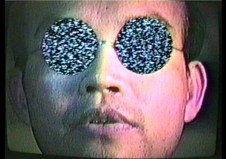
On the Way Home 關於回家的路上
On the Way Home 關於回家的路上
By Goang-Ming YUAN
1989, 13:29, Color, Sound, S-VHS transferred digital. West Coast Premiere!
One of the earliest pioneering and avant-garde video arts in Taiwan.
A man walked home in the rain holding an umbrella. The movie shows the daily scenes of the protagonist returning home, but every detail is filled with an uncanny atmosphere.
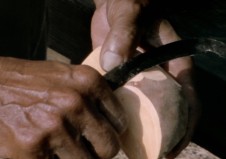
The Unnamed 待以名之的事物
The Unnamed 待以名之的事物
By Ya-Li HUANG
2010, 10:48, Color, Sound, 35mm transferred digital. Los Angeles Premiere!
This film is constructed upon the visual poetry between what you hear and see, and a sensual fluidity that is not based on the cause-and-effect relationship. It casts away the practicalities and the functionalities commonly defined in real-world objects by returning things to their raw state, and guiding the viewer’s awareness to the finer details, while intertwining layers of poetic imagery.
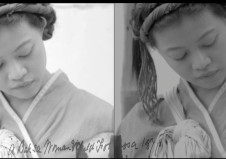
Looking for Siraya 尋找木柵女
Looking for Siraya 尋找木柵女
By Li-Ming CHENG
2013, 28:00, Color, Sound, Digital. US Premiere!
In 1871, the photographer John Thomson came to Formosa to take photos which became the first images of the island seen in the West. Things have changed after more than a century. I chose one of his photos showing an indigenous mother and her child shot in Mucha, Kaohsiung as the starting point of an exploration of the island’s past and the mysterious origin of its ancestors.
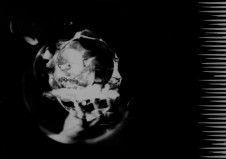
Siren's Lullaby 海妖嬰唱
Siren's Lullaby 海妖嬰唱
By Tzu-An WU
2023, 3:03, B&W, Sound, 16mm transferred digital. US Premiere!
The Mermaid exchanged her singing for walking on land. The voice of an infant who has not yet learned language is like foam that has not yet risen to the surface of the sea. Perhaps the silence of the sirens, like in Kafka's "The Silence of the Sirens," might travel underwater. Imagine that this world that we cannot perceive could eventually turn into a bubble. The film is an experiment in repeated exposures of a roll of 16mm film, combining digital and analog image sources and using pre-determined graphics to construct the synchronization of sound and image.
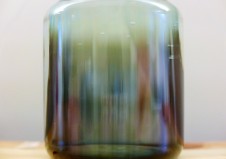
Developing 顯影
Developing 顯影
By Tsen-Chu HSU
2021, 08:00, Color, Silent, Digital. US Premiere!
This is a small experiment to reveal the secret of vision and time. It simulates the hidden process of Reversal Film which gradually developing its images in the darkness under the water.
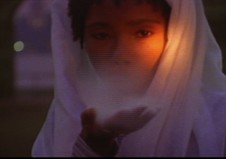
Van Gogh’s Ear 梵谷的耳朵
Van Gogh’s Ear 梵谷的耳朵
By Mi-Sen WU
1995, 20:00, Color/B&W, Sound, 16mm. Los Angeles Premiere!
David Schwartz, the curator of the American Museum of the Moving Image, has described the film as a visual smorgasbord combining editing and content to perfection with a striking and energetic with a rich spiritual vision sewing together three different sections with a stylish non-narrative form. In Wu’s work, he attempts to expose the contradictions between life and art by disturbing the boundaries of fiction and reality. Mi-Sen Wu hopes that his film will inspire audience sensitivity to these contradictions.
The film is constructed in three “chapters”. The two brief introductory sections lead to the final segment on Allen Ginsberg. In the film, I attempted to humanize the legend of Allen Ginsberg. Passages revealing the poet engaged in the common act of taking a taxi and addressing a class student present a mortal image of the poet/philosopher. These moments juxtaposed with more familiar poetic vision create a unique portrait of this legendary figure.
